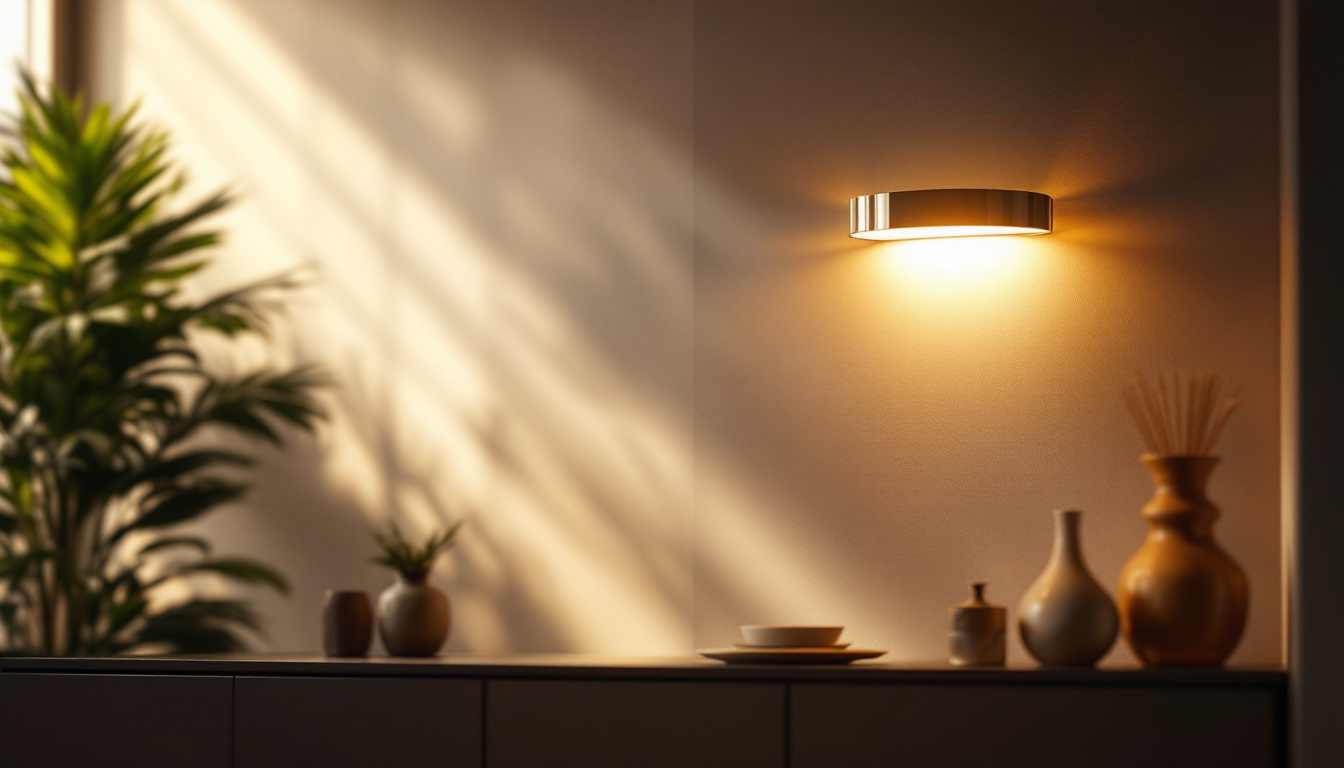
In an era where sustainability and energy efficiency are at the forefront of technological advancements, solar power lighting solutions are making significant inroads into indoor applications. Traditionally associated with outdoor use, solar-powered lights are now being reimagined for indoor environments, offering unique benefits that lighting contractors can leverage to enhance their projects. This article explores how solar power lights are transforming the way lighting contractors work, the advantages they offer, and the considerations that come with their implementation.
The growing awareness of environmental issues has led to a surge in demand for renewable energy sources. Solar power, in particular, has gained traction due to its accessibility and effectiveness. Lighting contractors are increasingly recognizing the potential of solar power lights for indoor use, as these solutions align with the broader goals of energy efficiency and sustainability.
Solar power lights for indoors are designed to harness sunlight, converting it into usable energy that can illuminate spaces without relying on conventional electrical systems. This innovation not only reduces energy costs but also minimizes the carbon footprint associated with traditional lighting methods. As a result, lighting contractors are finding new opportunities to incorporate solar technology into their projects.
One of the most compelling reasons for lighting contractors to consider solar power lights for indoor applications is the myriad of benefits they offer. These include:
Indoor solar lights can be utilized in various settings, making them a versatile option for lighting contractors. Some common applications include:
Moreover, the technology behind indoor solar lighting has advanced significantly, allowing for more efficient energy conversion and storage. Modern solar panels are now more compact and aesthetically pleasing, making them easier to integrate into various interior designs without compromising the visual appeal of a space. Additionally, many solar lighting solutions come equipped with smart technology, enabling users to control lighting levels and schedules via mobile apps. This level of customization not only enhances user experience but also optimizes energy usage, further contributing to sustainability goals.
As the market for indoor solar lighting continues to expand, manufacturers are also focusing on creating products that cater to specific needs and preferences. For instance, some solar lights are designed with adjustable brightness settings, while others feature motion sensors that activate lighting only when needed. This adaptability makes solar lighting an attractive option for a wide range of applications, from cozy reading nooks to bustling office environments. With ongoing innovations and a growing emphasis on renewable energy, the future of indoor solar power lighting looks promising, paving the way for a more sustainable approach to illumination.
While the benefits of solar power lights for indoor use are significant, there are challenges and considerations that lighting contractors must address. Understanding these factors is crucial for successful implementation.
One of the primary challenges associated with indoor solar lighting is the need for effective energy storage solutions. Solar lights rely on batteries to store energy for use when sunlight is not available. The capacity and lifespan of these batteries can impact the overall performance of the lighting system. Contractors must carefully select high-quality batteries that can provide adequate power for the intended application. Additionally, the location of the solar panels can also influence energy collection; for instance, if panels are placed in a shaded area or if the indoor space has limited access to natural light, the efficiency of energy capture can be significantly reduced. This necessitates a thorough site assessment to ensure optimal placement and functionality of the solar components.
Another consideration is the light output and quality of solar-powered indoor lights. While advancements in solar technology have improved efficiency, not all solar lights are created equal. Lighting contractors must evaluate the lumen output and color temperature of the fixtures to ensure they meet the specific needs of the space. Proper lighting design is essential to create a comfortable and functional environment. Furthermore, the integration of smart lighting controls can enhance the usability of solar lights, allowing for adjustments in brightness based on occupancy or time of day. This not only improves energy efficiency but also contributes to a more tailored lighting experience, catering to the diverse activities that may occur within the indoor space.
The landscape of solar power lighting is continuously evolving, with new technologies emerging that enhance the functionality and efficiency of these systems. Lighting contractors should stay informed about these innovations to provide the best solutions for their clients.
Smart technology is making its way into solar lighting, enabling enhanced control and customization. Smart solar lights can be equipped with sensors that detect occupancy, adjusting brightness levels based on the presence of people in the room. This not only improves energy efficiency but also enhances user experience by providing tailored lighting solutions.
As home automation systems gain popularity, the integration of solar power lights into these networks is becoming increasingly feasible. Contractors can offer clients the ability to control their indoor solar lights remotely, allowing for greater convenience and energy management. This integration can also enhance the overall aesthetic and functionality of a space.
To maximize the benefits of solar power lights for indoor applications, lighting contractors should adhere to best practices during the planning and installation phases. These practices can help ensure that the solar lighting systems are effective and meet the needs of the end-users.
Before selecting and installing solar power lights, contractors should conduct a thorough site assessment. This involves evaluating the amount of natural sunlight the space receives, as well as identifying any potential obstructions that could hinder solar energy collection. Understanding the unique characteristics of each project will allow contractors to make informed decisions about the type and placement of solar lights.
Not all solar lights are suitable for indoor use. Lighting contractors should carefully research and select products that are specifically designed for indoor applications. This includes considering factors such as battery capacity, light output, and design aesthetics. Collaborating with reputable manufacturers can also ensure access to high-quality products that meet industry standards.
Examining successful case studies can provide valuable insights into the practical applications of indoor solar power lights. These examples highlight the potential of solar lighting solutions in various environments.
In a recent residential renovation project, a homeowner sought to reduce energy costs while enhancing the ambiance of their living space. The lighting contractor recommended solar-powered pendant lights for the kitchen and dining areas. By strategically placing solar panels on the roof, the contractor was able to harness sunlight effectively, resulting in a significant reduction in electricity bills while providing warm, inviting lighting for family gatherings.
A commercial office space looking to improve its sustainability credentials opted for solar power lights in common areas such as hallways and break rooms. The lighting contractor installed solar fixtures equipped with motion sensors, ensuring that lights would only activate when needed. This approach not only reduced energy consumption but also created a modern and eco-friendly atmosphere that resonated with employees and clients alike.
The future of indoor solar power lighting appears bright, with ongoing advancements in technology and design. As more lighting contractors embrace these solutions, the industry is likely to witness a shift toward more sustainable practices.
As awareness of the benefits of solar power lights grows, their adoption is expected to increase across various sectors. From residential to commercial and public spaces, the versatility of solar lighting solutions will continue to attract interest. Lighting contractors who adapt to this trend will position themselves as leaders in the evolving market.
Collaboration between manufacturers, contractors, and clients will be essential for driving innovation in indoor solar lighting. By sharing knowledge and resources, stakeholders can develop new solutions that address the unique challenges of different environments. This collaborative approach will foster creativity and lead to more effective and efficient solar lighting systems.
Indoor solar power lights are revolutionizing the way lighting contractors approach their projects. With numerous benefits, innovative technologies, and successful case studies to draw inspiration from, the potential for solar lighting solutions is immense. By embracing this trend, lighting contractors can not only enhance their service offerings but also contribute to a more sustainable future. As the industry continues to evolve, staying informed and adaptable will be key to leveraging the full potential of solar power lights in indoor applications.
Ready to harness the transformative power of indoor solar lighting for your next project? Look no further than LumenWholesale, where we provide contractors with exceptional, spec-grade lighting products at unbeatable wholesale prices. Our extensive selection not only meets but exceeds industry standards, ensuring you deliver reliable and high-performance lighting solutions. Say goodbye to middleman markups and hello to hassle-free bulk buying with free shipping. Elevate your lighting game with the perfect blend of quality, affordability, and convenience. Discover Wholesale Lighting at the Best Value today and light up your projects with confidence.

Explore the ins and outs of the Levitron 5693-2E in this comprehensive guide tailored for lighting contractors.

Discover the essentials of ballasts for fluorescent lights in this comprehensive guide tailored for lighting contractors.

Discover the essential insights lighting contractors need when working with architectural cylinder lights.

Discover essential best practices for lighting contractors working with T8 LED technology.
Get notified when NEW deals are released.
Optimize your budget with wholesale discounts.
Only top-quality, specification-grade lighting products.
No additional costs at checkout - what you see is what you pay.
We understand the unique needs of contractors.